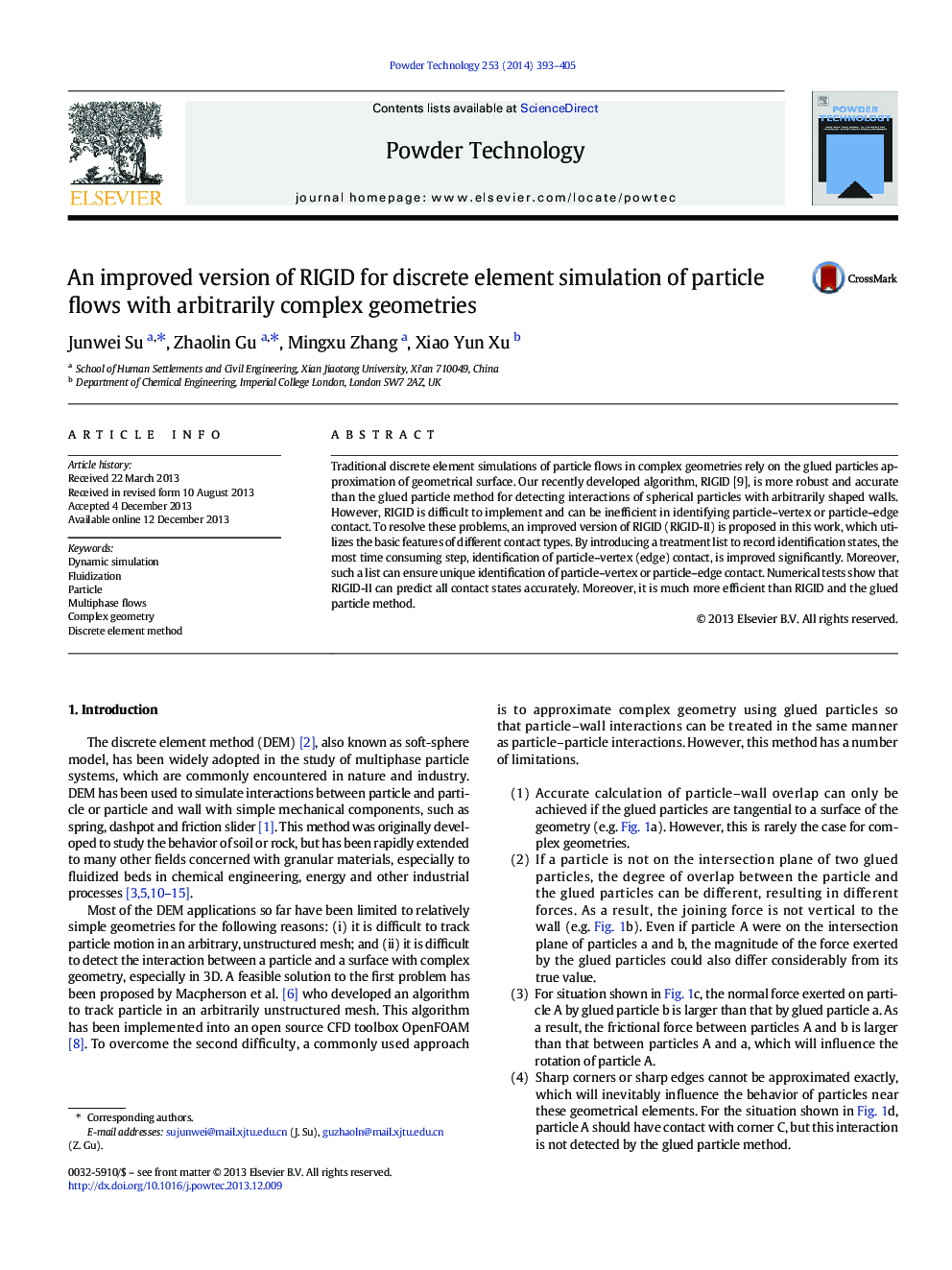| Article ID | Journal | Published Year | Pages | File Type |
|---|---|---|---|---|
| 236475 | Powder Technology | 2014 | 13 Pages |
•RIGID-II is used to detect contacts between spheres and an complex surface.•RIGID-II can predict the contact state accurately.•DEM can be used for particle flow in arbitrarily complex geometry with RIGID-II.•RIGID-II is more efficient than its original version and glued particle method.
Traditional discrete element simulations of particle flows in complex geometries rely on the glued particles approximation of geometrical surface. Our recently developed algorithm, RIGID [9], is more robust and accurate than the glued particle method for detecting interactions of spherical particles with arbitrarily shaped walls. However, RIGID is difficult to implement and can be inefficient in identifying particle–vertex or particle–edge contact. To resolve these problems, an improved version of RIGID (RIGID-II) is proposed in this work, which utilizes the basic features of different contact types. By introducing a treatment list to record identification states, the most time consuming step, identification of particle–vertex (edge) contact, is improved significantly. Moreover, such a list can ensure unique identification of particle–vertex or particle–edge contact. Numerical tests show that RIGID-II can predict all contact states accurately. Moreover, it is much more efficient than RIGID and the glued particle method.
Graphical abstractFigure optionsDownload full-size imageDownload as PowerPoint slide
